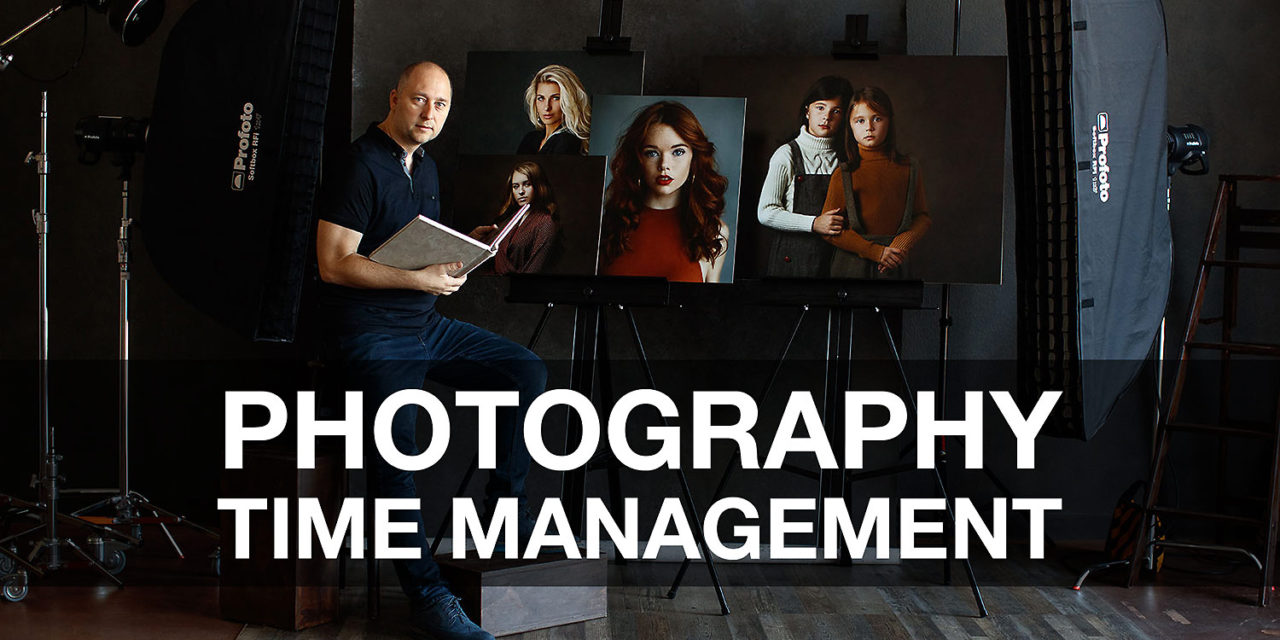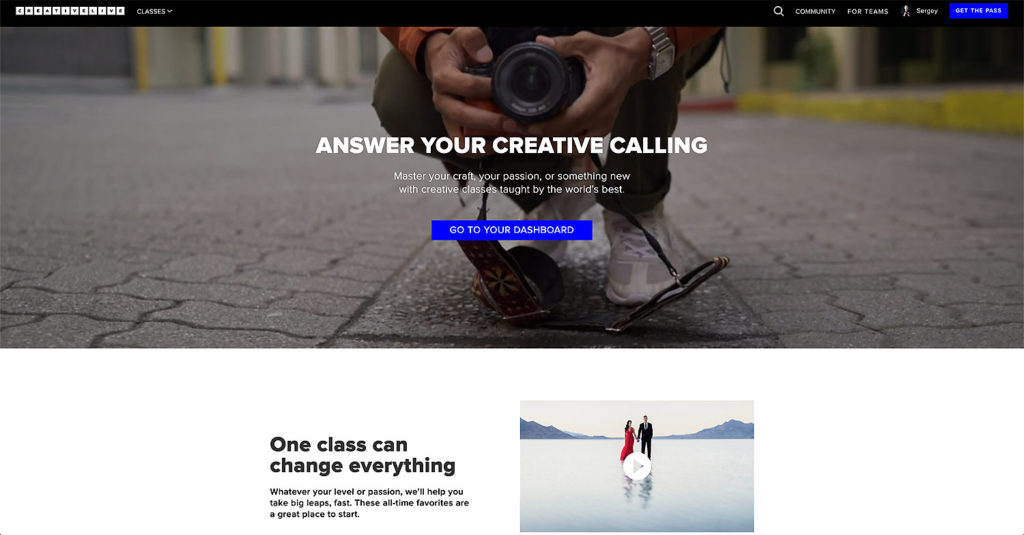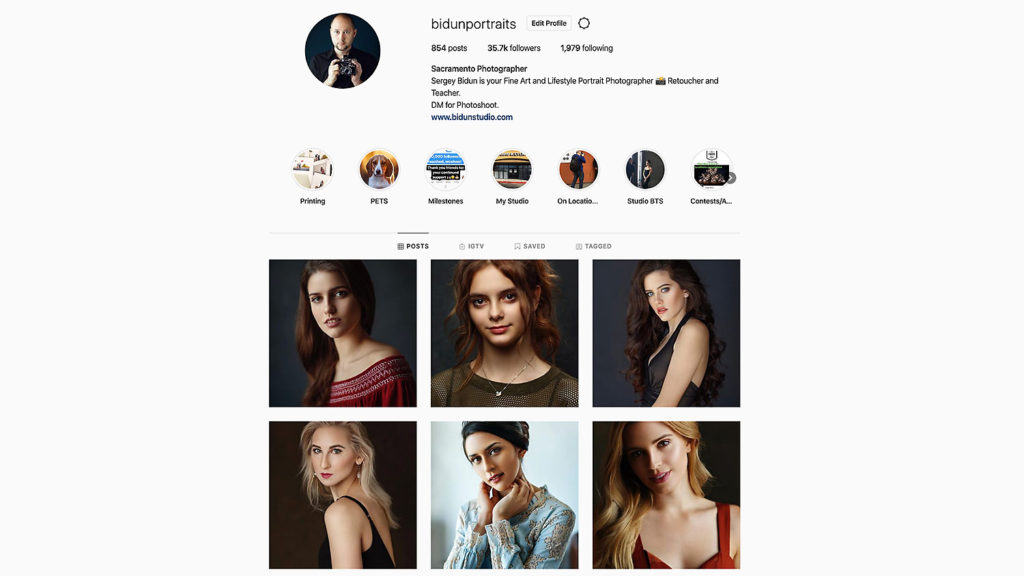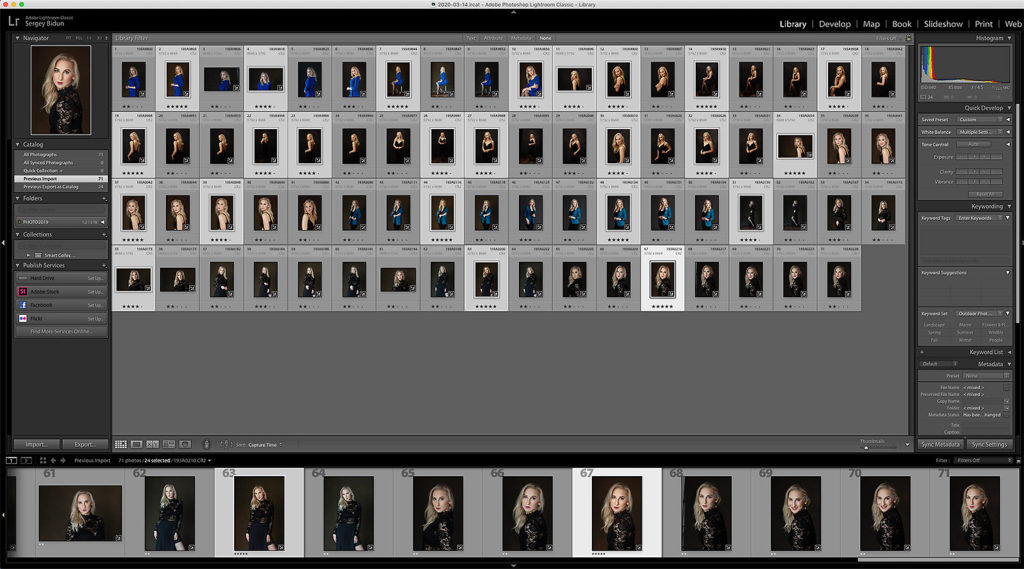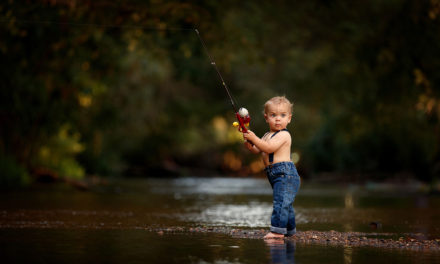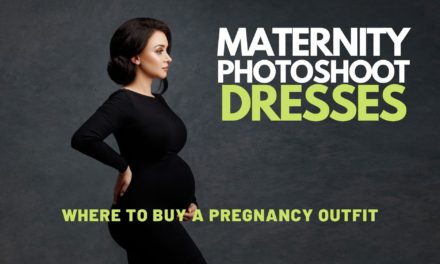Photographers often confuse portrait photoshoot time and the actual time it takes to prepare, shoot, and process images from a portrait session. As a new or beginner photographer, one must understand the difference between these things.
Before we dig into the details of what components make up a portrait session from start to finish, let’s run through the basics. As a portrait photographer, you must be able to calculate how much time is involved in your line of work. After all, we all want to be profitable without exhausting ourselves.
In this article, we will discuss how long does it really take for the photographer to shoot and process a portrait photoshoot. I will be speaking from a professional portrait photographer’s point of view, who creates high-end quality portraits and unique experience. We won’t be mentioning shoot-and-burn photographers in this article.
We will look into a case when the photographer gets all of the photography steps done on his own (from communicating with the client to photoshoot time, to editing and delivering the final product)
It takes approximately 20-24 hours or more for a professional portrait photographer to shoot and process a photo session. Each photographer has their own skill level in photography and editing, and the time may vary.
Let’s dive deeper into each part of the photoshoot process and how much time it takes for the photographer. This knowledge will help you to manage your time better and correctly price your work.
This post may include affiliate links. Please read our disclosure policy. [045]
PORTRAIT PHOTOGRAPHER WORK-TIME BREAKDOWN
This is a breakdown of approximately how much time it takes for a portrait photographer from initial client inquiry to delivery of final images/products.
| PHOTOGRAPHY PROCESSES | TIME |
| Education | 2 hours or more |
| Photography Marketing | 4 hours and more |
| Communication with the client (emails, calls, messages, in-person consultations) | 2 hours |
| Photoshoot & Equipment preparation | 1 hour |
| Drive to and from the photoshoot | 30min -1 hour |
| Photo Session Time | 2 hours or more |
| Transfer + Photo Backup | 30min – 1 hour |
| Culling photos | 1-2 hours |
| Viewing + Ordering session | 1-2 hours |
| High-end retouch 20 Images (given 1 image takes 20min) | 6-8 hours or more |
| Packaging + Delivery (Online gallery or physical product) | 1-2 hours |
| TOTAL | 20-24 hours or more |
Now let’s discuss each of these elements in detail, so you can figure out for yourself how much time it takes you to process a portrait session from beginning to the end.
EDUCATION
Not everyone realizes that photography is the type of job that requires constant learning and education advancement. Photographers continuously need to sharpen their skills in lighting, portrait posing ideas, photo editing, and marketing.
Photography education comes in many shapes and forms: it can be through online courses, Youtube tutorials, photography workshops, or even reading educational blogs. You cannot grow your creative skills without educating yourself on these topics.
Photographers have to be updated on new photo gear, software, and how to streamline their post-processing. If technical issues arise, photographers look for ways to solve the problem by researching all the possible options. It can take a bit of time to problem-solve.
Whenever you work with clients, your customer service skills need to be at the top level. Educating yourself on ways to improve customer service is very beneficial to the photography business.
Photography education will take 2 hours or more per each photo session.
Equipment that I use: Cameras: Canon EOS R5; Canon EOS R6
Lenses: Canon RF 85/1.2L; Canon RF 28-70mm f/2L; Canon RF 15-35mm F2.8L
Light: Profoto B1 500 | Computer: Apple MacBook Pro | Photo by © Sergey Bidun
MARKETING FOR PORTRAIT PHOTOGRAPHY
It’s no secret for anyone that in 21st-century photographers must spend a good amount of time and resources on marketing. Without it, our work wouldn’t be seen by people – aka potential clients.
Marketing can be done in multiple ways, such as a personal website, social media accounts (Instagram, Facebook, Twitter), giving out business cards, brochures, and printables, etc.
SOCIAL MEDIA
Sometimes we don’t realize how much time it actually takes to keep our social accounts updated with new posts. Professional photographers can’t post just any recent image from their iPhone camera roll.
When you have a portrait photography page on Instagram, all of the images must be high-quality and in your unique style. Getting your pictures looking this way takes a bit of time in the computer processing.
Social media marketing is one of the most popular ways to promote photography work. Even though it can be time-consuming, photographers still dedicate their time to these platforms every day.
WEBSITE BLOG POSTS
Uploading a new portrait session on a website blog is equally important, and it requires much more time. If posting one portrait on Instagram can take you 10 minutes, a blog post can take you hours.
The most significant benefit of a website blog post is that you can post a whole gallery from any portrait session. This gives your potential clients a chance to really get a feel of your photography style.
And don’t forget that you should share the blog post link to your Instagram or Facebook, so your friends and followers can check out your work.
MARKETING PRINTABLES
Business cards may not be as popular as they used to be when I was starting in photography, but they are still great marketing material. It’s always a good idea to have some marketing printables on you, so you can quickly show a glimpse of your portfolio to people that you come in contact with.
Some other examples of marketing printables could be vouchers, brochures, or a listing in a magazine or newspaper. Designing, printing, and distributing marketing printables takes quite a bit of time for photographers, but it’s an inevitable part of any business.
Now let’s imagine approximately how many marketing printables, social media, and blog posts the photographer needs to make to get an inquiry?
If you calculate the amount of time you spent on online and physical marketing for a year and divide it by the number of photo sessions you did – you will be surprised how much time it takes.
You might not want to do each of the marketing strategies described above, but you need to realize this part of the business requires a lot of consistent work and time.
On average, it takes 4 hours and more of marketing to get a serious client inquiry.
COMMUNICATION TIME
Client communication can be done in many different forms – email, phone calls, text messages, social media messages, or in-person consultations. After the initial contact, both client and photographer choose which method of communication is most convenient for them.
In my experience, I prefer communicating in-person or through a phone call. This helps me to get to know the client better by being able to hear their voice and seeing each other in-person.
There is no right or wrong way of communication – it’s a matter of preference between the client and the photographer. The main goal is for the photographer to explain their services to the clients and help them feel secure that they made the right choice by hiring you for the job.
As a client, you can tell a lot about the photographer based on their communication skills. Professional photographers always reply to messages promptly, answer any clients’ questions, and help them with photoshoot styling ideas.
A lot of times, the photographer is your personal photoshoot planner. He or she will give you suggestions on how to better prepare for the session, what outfits to pick, and how to choose the right location.
I recommend you to see our post How to Prepare for a Portrait Photo Session for more ideas. It’s important to know which steps you need to take before the photoshoot for the best outcome. Successful photo session requires preparation both from photographer and the client.
Don’t forget to add the time spent on communicating with potential clients who were interested in your services but didn’t book.
Communication with the client both before and after the photo session will take approximately 2 hours or more.
PHOTOSHOOT & EQUIPMENT PREPARATION BEFORE THE SHOOT
PHOTOGRAPHER PREPARATION
In addition to helping your clients prepare for the photo session, the photographer spends time developing new ideas and using creativity before the project. Photographers constantly research new photoshoot spots and do location scouting.
Your clients will have different preferences, and we must be able to accommodate that. Creating a unique and custom photography experience is the goal of a professional portrait photographer.
Depending on if it’s a single person portrait photoshoot or a family group photoshoot, different posing ideas will come into play. Before the session, the photographer usually refreshes their mind with inspirational images and posing ideas for the session.
EQUIPMENT PREPARATION
It’s equally important to prepare your photography gear for the photo shoot ahead of time. It’s best to examine your camera and lenses not just before the photo shoot, but regularly. Doing so will prolong the life of your photography gear, and you will be ready to do even a spontaneous photo shoot.
The night before the photo session, I start preparing my gear for the job. I make sure to charge the camera batteries and bring spare ones just in case. I also double-check if all of the images from memory cards have been transferred, and the cards are formatted.
After batteries and memory cards are ready, it’s time to pack the camera bag. For portrait sessions, I like to bring my 85mm, 50mm, and 70-200mm lenses. It’s also a good practice to bring a backup camera in case your main camera breaks down during a shoot. (This doesn’t happen very often, but is a good tip.)
Overall, the time spent on preparing your ideas, inspirations, and photography gear for the photo shoot will be 1 hour or more.
DRIVE TO AND FROM PHOTOSHOOT
When calculating the time spent on a photo shoot project, we must not forget the time it takes to commute. Depending on the location of the session and the time of day, the drive time will vary.
Getting to a local park may take no more than 15 minutes one way. But if you are heading to a state beach or national park – it may take you at least an hour to get there.
It’s important to consider the commute time when preparing for the photo shoot. If you miscalculate the driving time and show up late to the photo session, it may be too late for sunset pictures. The photographer must be timely and professional at all times.
Details such as location choice must also be taken into consideration when pricing your photography project. It’s crucial that photographers get reimbursed for the extra driving time, park admission fees, permits, and any additional fees that may come up.
On average, photographers dedicate 30min to 1 hour or more of their time for driving to and from the photo session.
PHOTOSHOOT TIME
I won’t be wrong if I say that the photographer is not sure how long the photoshoot will last, going into it. It really depends on what type of photoshoot it is and how many people are being photographed.
A single person photo session, such as a senior shoot, may take about 2 hours. For multiple location sessions – add another hour of time. But it also depends on how quickly the client gets used to the camera and becomes relaxed.
It’s never a good idea to rush the photoshoot or suggest your client weird or uncomfortable poses. The main goal is for them to have a fun time and a great experience while feeling comfortable in front of the camera.
You will find many helpful tips in our Posing Tips for Women Portrait Photography article.
Family portraits are usually done in one location, so that not to wear out the kids. Whenever there is a family and kids photoshoot, more planning and preparation must be done beforehand. I suggest you read our post on 5 Tips for Photographing Kids for our pointers.
For large families or generations portraits, the photographer must allow at least 2 hours. It requires more time and photographer skills to get high-quality large family portraits.
Usually, the photoshoot takes 2 hours or more to capture enough authentic portraits.
TRANSFER + PHOTO BACKUP
Now that the photo shoot is over – the fun part begins. The first step after each photo session is transferring the images. It’s very important to transfer pictures right away, to reduce the chances of losing any data.
Once you transfer images to the computer, you must also do backup in another storage place. Backing up work is crucial – it will save you a lot of unnecessary headache.
Backup can be done either on a hard drive, online via Dropbox, or on a server. I like to backup my work on the computer, hard drive, and online storage. It’s really up to the photographer which method of backup they prefer.
Typically, it may take 30min to 1 hour for a photographer to transfer images and backup their work.
CULLING PHOTOS
After transferring and backing up images, the photographer proceeds to sort the photos. The process of sorting photos in photography is called culling.
During the culling process, the photographer takes out images that are out of focus, have closed eyes, or with funny faces. The photographer must also choose between the “ok” pictures for the one that stands out the most.
For me, culling is a 2 or 3 round process. During the first round, I take out the pictures with obvious flaws such as out of focus, closed eyes, etc. During the second round, I look for doubles or multiple pictures of the same pose. If the images are too similar, I choose one that looks the best out of the bunch.
After the culling process is finished, the photographer is left with the very best images from the session. This way, their client will be presented with the best photos to make their selection from.
The culling process can take 1-2 hours of your time.
Equipment that I use: Cameras: Canon EOS R5; Canon EOS R6
Lenses: Canon RF 85/1.2L; Canon RF 28-70mm f/2L; Canon RF 15-35mm F2.8L
Light: Profoto B1 500 | Computer: Apple MacBook Pro | Photo by © Sergey Bidun
VIEWING & ORDERING SESSION
Viewing and ordering session can be done either at the photographer’s studio, a local cafe, or even at the client’s home. What you need is a projector or a laptop and a quiet space where you can present the images to your client.
During the viewing & ordering session, the client is presented with the best images from their portrait session. Now the client is making a choice which images and products they want to order.
Always have samples of products that you are offering in your collections. Having visual examples that you can touch and look through is always better than seeing the choices online.
My clients always appreciate it when I help them choose the best images from the photoshoot. Offer them your help and expertise. It will make you seem like a high-end customer service photography studio that you are.
The viewing & ordering session should not be in a rush. Always tell your clients to allow enough time for this meeting. On average, it takes 1-2 hours to make all of the decisions.
HIGH-END FULL RETOUCH
Every photographer develops their style of shooting and post-processing. These two factors are what draws people to their work. Consistency in editing is crucial for photographers, and everyone has a somewhat different take on it. I prefer to use Photoshop for my portrait editing purposes.
High-end portrait retouch is not just color correcting the image. The photographer works his skills on touching up the skin, fixing under the eye circles, softening wrinkles, removing unwanted objects from the photo, etc.
This type of editing cannot be done through batch edit, as it requires detailed retouching. When editing, I want to make sure that my edit is custom to that particular photo. My clients value this, and it’s what sets Bidun Studio Photography apart from other Sacramento photographers.
Images that will be printed as big wall portraits require additional editing in Photoshop. Photographers will spend more time preparing are re-sizing the image to keep it high quality when printed on wall portraits.
It will take additional hours to design senior or family albums and get approval from the clients. Photographers’ main goal is for you to have an amazing keepsake from your portrait photo session.
As photographers have a different approach to photo editing, it might take them a different amount of time. To edit one image, it can take anywhere from 10 minutes to half-hour or more. A collection of 20 images can take approximately 6-8 hours to edit. For some photographers, it may take even more time for editing.
You can see my retouching process in this video.
PACKAGING AND DELIVERY
Packaging and delivery are the last steps in portrait photography experience. Once the printed products arrive from your preferred lab, it’s time to package the order and deliver it to your client.
If the client only ordered digital images, they will usually receive their pictures digitally via an online gallery download. This is a very convenient way for many clients, and the fastest as well.
Delivering printed products such as wall artwork or an album will require much more time. With printed products, photographers often want to bundle them with their branded packaging, such as a bag or a box. Once everything is wrapped, and you are happy with the result – it’s time to deliver it to the client.
Delivery can be done in one of three ways. You can ask the client to come into your studio and pick up their order. You can mail the package to your client (if they are unable to stop by). Or you – the photographer – can deliver the finished product to the client’s home and help them install wall prints.
The packaging & delivery can take at least 1 hour of your time. But if you end up delivering the finished product to your client’s home, it may take even more.
CONCLUSION
This breakdown should help you to get a better idea of how much time photographers really spend to process portrait photo session from start to finish. As you can see, the photoshoot process time is much more than the session itself.
If we add up the times from the steps described above, it comes up to 20 hours and more. This equals to almost three full days of work!
Calculate your photoshoot time and how much time it takes you from the time before the client contacts you to the time you deliver the finished product. You will be surprised!
Photographers must always value their time and talent and consider it when pricing their work. Don’t let anyone tell you that your time is not valuable, and you should work for free. Our line of work is significant to humanity.
Being a photographer is not an easy job, but our duty is to show beauty to the world. It is through artistic and creative imagery that people start to love themselves and see their flaws as advantages. Portrait photographers have a way of highlighting people’s best features.
IF YOU FOUND THIS POST HELPFUL AND INFORMATIVE, PLEASE SHARE IT IN YOUR SOCIAL MEDIA.
Photographer: Sergey Bidun
Written by Maria Bidun
Bidun Studio Photography is based in Sacramento, California
YOU CAN ALSO SEE SOME OF OUR SIMILAR POSTS

